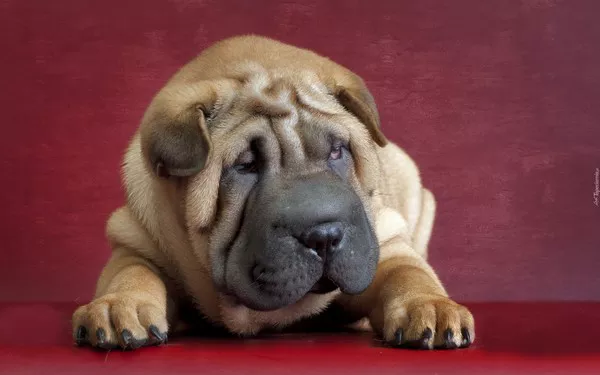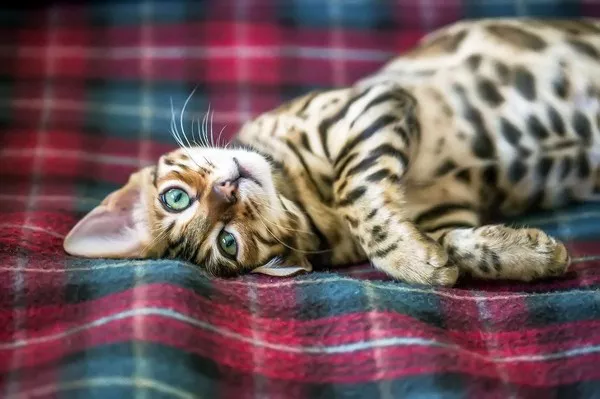The Chinese Shar-Pei is a unique and fascinating breed known for its distinctive wrinkled skin. This article delves into the various aspects that contribute to the wrinkled appearance of Shar-Peis, exploring their history, genetics, functionality, and the implications of these traits. We will also provide insights into the care and maintenance of their special skin needs and address common questions about the breed.
Breed History
The Chinese Shar-Pei is an ancient breed with a rich history dating back to the Han Dynasty (206 B.C. to 220 A.D.). Originating in the Guangdong province of China, the Shar-Pei was initially bred for several purposes, including hunting, herding, and guarding livestock. However, its most notable historical role was as a fighting dog. The breed’s distinctive wrinkles and loose skin were advantageous in dog fights, providing some protection against bites.
The name “Shar-Pei” translates to “sand skin” in Cantonese, referring to the breed’s rough, bristle-like coat. This unique coat texture, combined with their deep wrinkles and blue-black tongue, made the Shar-Pei easily recognizable and revered in Chinese culture. Unfortunately, the breed faced near extinction during the 20th century, particularly under the Communist regime, which imposed heavy taxes on dog ownership. A concerted effort by breeders, particularly in Hong Kong and later in the United States, helped revive the Shar-Pei population and preserved this unique breed for future generations.
Genetic Factors
The distinctive wrinkles of the Chinese Shar-Pei are primarily the result of a genetic mutation affecting the HAS2 gene. This gene is responsible for the production of hyaluronic acid, a substance that occurs naturally in the skin and contributes to its elasticity and hydration.
In Shar-Peis, a mutation in the HAS2 gene leads to an overproduction of hyaluronic acid. This excess hyaluronic acid accumulates in the skin, creating the thick, wrinkled appearance that is characteristic of the breed. Interestingly, this genetic trait is not only responsible for the visible wrinkles but also for the breed’s tendency to develop a condition known as “mucinosis,” where a gel-like substance can be felt beneath the skin due to the high levels of hyaluronic acid.
The genetic makeup of the Shar-Pei is a prime example of how a single gene mutation can lead to significant physical characteristics. This genetic trait has been intentionally preserved and accentuated through selective breeding practices over the years, contributing to the breed’s distinctive look.
Functional Purpose
The original functional purpose of the Shar-Pei’s wrinkles is rooted in the breed’s history as a fighting dog. The loose, wrinkled skin served as a form of protection during dog fights. When another dog bit the Shar-Pei, the loose skin allowed the Shar-Pei to twist and turn, potentially escaping further injury or counterattacking while minimizing damage to vital organs and muscles.
Moreover, the wrinkles around the head and neck acted as a shield for these critical areas, making it more difficult for opponents to get a firm grip. This adaptation was crucial for survival in the harsh environments and conditions where these dogs were originally used.
While the Shar-Pei is no longer bred for fighting purposes, the breed’s physical characteristics remain a testament to its historical roots and the practical applications of its unique appearance.
Selective Breeding
Selective breeding has played a significant role in accentuating the wrinkles of the Chinese Shar-Pei. Breeders have intentionally chosen dogs with more pronounced wrinkles to reproduce, thereby enhancing this distinctive trait in subsequent generations. This practice has led to the exaggerated wrinkling seen in modern Shar-Peis compared to their ancestors.
In the mid-20th century, when the breed was on the brink of extinction, efforts to revive the Shar-Pei involved selecting dogs with the most desirable traits, including the prominent wrinkles. These efforts were crucial in establishing a consistent breed standard that emphasized the unique wrinkled appearance.
The focus on enhancing the breed’s wrinkles has not been without its challenges. Breeding for specific traits can sometimes lead to unintended health issues, which will be discussed in the following sections. Nonetheless, the intentional development of the Shar-Pei’s wrinkles is a prime example of how selective breeding can shape and define a breed’s characteristics over time.
Health Implications
While the wrinkles of the Shar-Pei contribute to its distinctive appearance, they also pose several health challenges. The most common issues related to the breed’s wrinkles include skin infections, eye problems, and respiratory issues.
Skin Problems
The deep folds of skin in Shar-Peis can create a moist environment, which is ideal for bacterial and fungal infections. Conditions such as pyoderma, a bacterial skin infection, and yeast infections are common in the breed. Regular cleaning and drying of the skin folds are essential to prevent these issues.
Entropion
Entropion is a condition where the eyelids roll inward, causing the eyelashes to irritate the eye. This condition is prevalent in Shar-Peis due to their loose skin and deep facial wrinkles. Entropion can lead to discomfort, corneal ulcers, and even vision loss if not treated. Surgical correction is often necessary to alleviate this condition.
Respiratory Issues
The breed’s distinctive head shape and loose skin can also contribute to respiratory problems. Some Shar-Peis may develop brachycephalic airway syndrome, a condition that affects breathing. While this condition is more common in breeds with shorter muzzles, the loose skin and wrinkles of the Shar-Pei can exacerbate respiratory difficulties.
Care Tips for Preventing Skin Issues
Proper care and maintenance of a Shar-Pei’s skin are crucial to prevent health issues. Here are some tips to keep their skin healthy:
Regular Cleaning: Clean the wrinkles with a damp cloth or a gentle, pet-safe wipe to remove dirt and debris. Make sure to dry the folds thoroughly to prevent moisture buildup.
See Also:Are Chinese Shar Pei Aggressive?
Use of Antibacterial Solutions: In cases where infections are common, using an antibacterial or antifungal solution recommended by a veterinarian can help keep the skin healthy.
Monitor for Irritation: Regularly check the skin folds for signs of redness, swelling, or foul odor, which can indicate an infection.
Veterinary Care: Regular veterinary check-ups are essential to catch and address any skin or health issues early.
Breed Standards
Breed standards for the Chinese Shar-Pei, as defined by major kennel clubs such as the American Kennel Club (AKC) and The Kennel Club (UK), place significant emphasis on the breed’s wrinkles. According to the AKC standard, the Shar-Pei should have a broad, full muzzle with abundant wrinkles on the head, and a scowling expression. The body should also have moderate wrinkling, especially at the shoulders and withers, and the skin should be pliable.
The Kennel Club (UK) similarly outlines that the head should have wrinkles extending to form dewlaps, and the body should exhibit folds of skin. However, both standards also emphasize that these features should not be excessive to the point of causing health issues or impeding the dog’s function and movement.
These breed standards reflect a balance between maintaining the distinctive appearance of the Shar-Pei and ensuring the health and well-being of the dogs.
Care and Maintenance
Caring for a Shar-Pei’s skin requires diligence and regular maintenance. Here are some essential tips for proper care:
Bathing: Bathe your Shar-Pei regularly using a gentle, hypoallergenic shampoo. Avoid over-bathing, as it can strip the skin of natural oils, but ensure thorough rinsing to remove any shampoo residue.
Drying: After bathing, dry the skin folds thoroughly to prevent moisture buildup, which can lead to infections.
Diet: Provide a balanced diet rich in essential fatty acids to promote healthy skin. Consult your veterinarian for dietary recommendations tailored to your dog’s specific needs.
Regular Vet Visits: Schedule regular veterinary check-ups to monitor your Shar-Pei’s skin health and address any issues promptly.
See Also:Are Chinese Shar Pei Friendly?
Exercise: Regular exercise is important to maintain overall health and prevent obesity, which can exacerbate skin problems.
FAQs
1. Why do Shar-Peis have blue-black tongues?
Shar-Peis, along with Chow Chows, are known for their blue-black tongues. This unique feature is due to a concentration of pigment cells called melanin in the tongue. While the exact reason for this trait is unknown, it is a distinctive characteristic of the breed.
2. Are Shar-Peis good family pets?
Shar-Peis can make excellent family pets with proper training and socialization. They are known for their loyalty and protective nature. However, they can be reserved and aloof with strangers, and early socialization is crucial to ensure they are well-adjusted and friendly.
3. How often should I clean my Shar-Pei’s wrinkles?
It is recommended to clean a Shar-Pei’s wrinkles at least once a week, or more frequently if the dog is prone to skin issues. Regular cleaning helps prevent infections and keeps the skin healthy.
In conclusion, the wrinkles of the Chinese Shar-Pei are not merely a superficial characteristic but a testament to the breed’s rich history and functional significance. While their unique appearance may require extra care and attention, the unwavering devotion and companionship of these wrinkled wonders make them cherished members of countless families worldwide.
Related Topics:






















